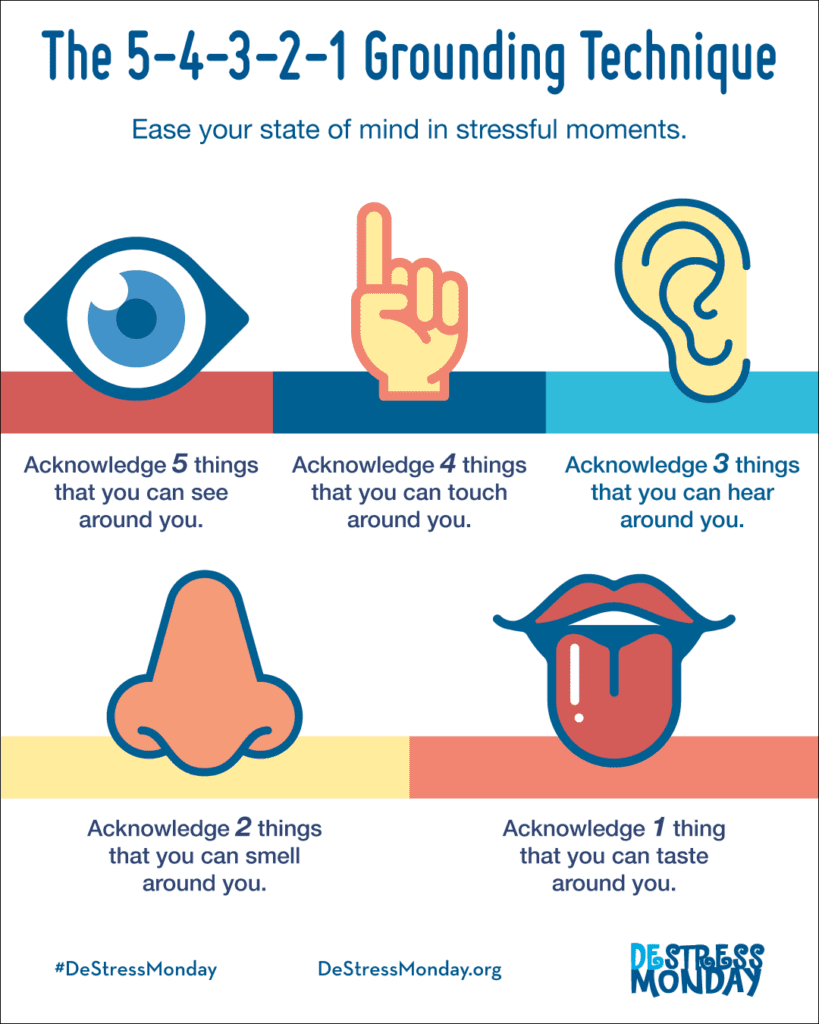17 Grounding Strategies: Calming our Nervous Systems
Grounding activates your body’s relaxation response, which helps you feel calm, present, and focused.
–Arizona University Wellness Centre
Practicing strategies for calming the nervous system can be extremely helpful for managing anxiety and trauma. Daniel Siegel‘s book “Developing Minds,” introduces the window of tolerance concept as a helpful way to understand our nervous system’s optimal range. The following graphic illustrates that we all have a “window” where we can manage what life brings to us. When we experience a traumatic event or have an ongoing build up of stress, our nervous system can go into high alert or shut down with numbness. Being either hyper aroused or under aroused makes it difficult to learn, communicate and function.

Purpose
The purpose of learning grounding strategies is to have techniques in one’s wellbeing tool box for calming the nervous system in times of distress.
Learning Objectives
Participants will:
- Be able to explain the theory of “windows of tolerance.”
- Research a grounding strategy for self-regulation.
- Teach the strategy to the group.
Activity Directions.
- Full Group Discussion: Brainstorm with the group some of the current stressors in their lives. What are some of the things they notice in their bodies, minds and behaviors when they are stressed or overwhelmed?
- Explain the window of tolerance theory: Show them the “window of tolerance” graphic or create your own version on the white board. Put some of their behaviors in the areas of the window of tolerance that show hyper or hypo arousal.
- Discuss: Ask them how they bring their nervous systems back into equilibrium when they are stressed and have moved out of their window of tolerance.
- Small group assignment. Divide the class into groups of three and have them research strategies for grounding and regulating their nervous systems. This University of Arizona grounding resource has many different strategies to choose from. You could assign one to each group to practice and then ask them to teach the class their strategy. Alternatively, if your group has ongoing meetings, you could start each session with a different group presenting and teaching a grounding exercise to help everyone become settled and ready to engage. This serves the dual purpose of helping to settle and focus your group and also helping them to learn and practice strategies that they can use in their everyday lives.
- Practice: Encourage the group to choose one of the strategies and practice it daily until the group reconvenes. If they practice it regularly, it can help them regulate their nervous system and they will have honed a strategy to use when they are stressed or overwhelmed.
Grounding Resources
If it is difficult for your group to find resources, here are some examples of practices that help humans to come back into their bodies, senses and the present moment so they can reconnect with basic reality. This is a free course offered by “Therapy in a Nutshell” that offers many strategies for calming the nervous system.
Free Course offering grounding strategies
Example of a grounding strategy that a group could teach the class
Square breathing is also known as box breathing or 4×4 breathing. The square breathing technique is super-simple. Here’s all you need to know about the technique itself:
- Step 1: Exhale your breath (to a count of 4)
- Step 2: Hold your breath (to a count of 4)
- Step 3: Inhale your breath (to a count of 4)
- Step 4: Hold your breath (to a count of 4)
- Step 5: Repeat
Source: healthline/grounding-techniques
This is another classic grounding strategy that is often used if someone is feeling overwhelmed or disconnected from reality:

